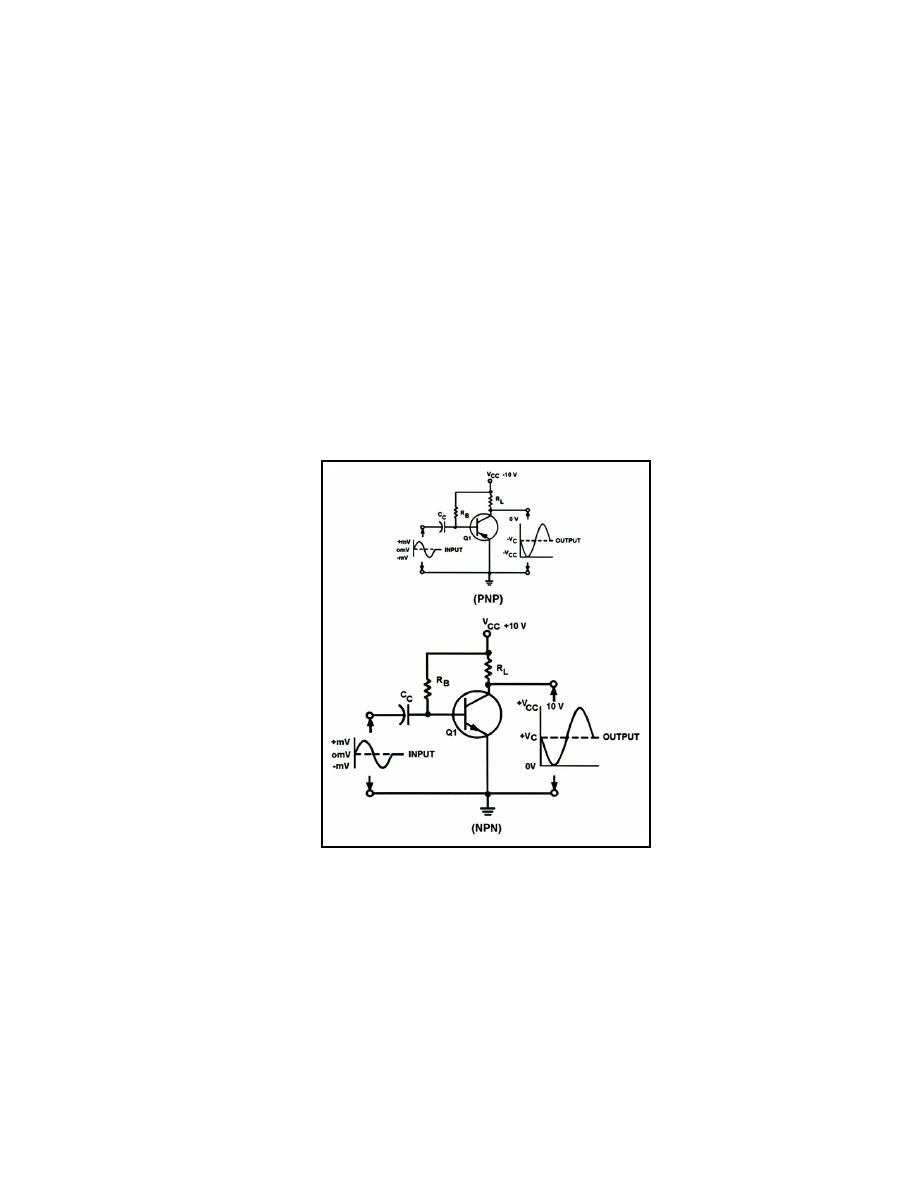
___________________________________________________________________________ Transistors
THE BASIC TRANSISTOR AMPLIFIER
2-32. To understand the overall operation of the transistor amplifier, you must only
consider the current going in and out of the transistor and through the various components
in the circuit. Therefore, from this point on, only the schematic symbol for the transistor
will be used in the illustrations. Rather than thinking about majority and minority carriers,
we will think in terms of emitter, base, and collector current.
2-33. There are two terms you should be familiar with before learning about the basic
transistor amplifier. These two terms are AMPLIFICATION and AMPLIFIER.
Amplification is the process of increasing the strength of a SIGNAL. A signal is just a
general term used to refer to any particular current, voltage, or power in a circuit. An
amplifier is the device that provides amplification (the increase in current, voltage, or
power of a signal) without appreciably altering the original signal.
2-34. Transistors are frequently used as amplifiers. Some transistor circuits are
CURRENT amplifiers, which have a small load resistance. Other circuits are designed for
VOLTAGE amplification, which have a high load resistance. Still other circuits amplify
POWER. Figure 2-14 shows an NPN version of the basic transistor amplifier.
Figure 2-14. Basic Transistor Amplifier
2-35. So far we have covered how a separate battery has been used to provide the
necessary forward-bias voltage. Although a separate battery has been used in the past for
convenience, it is not practical to use a battery for emitter-base bias. For instance, it would
take a battery slightly over .2 volts to properly forward bias a germanium transistor while a
similar silicon transistor would require a voltage slightly over .6 volts. However, common
batteries do not have such voltage values. Since bias voltages are quite critical and must be
held within a few tenths of one volt, it is easier to work with bias currents flowing through
resistors of high ohmic values than with batteries.
23 June 2005
TC 9-62
2-13


 Previous Page
Previous Page
